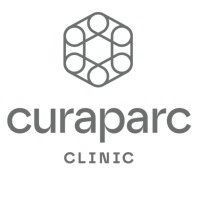Swimming after TKA and THA – please don’t be put off!
Don't be afraid of swimming after joint replacement!

After a joint replacement of the knee (TKA) or hip (THA), many patients ask themselves whether and when sporting activities, especially swimming, will be possible again. There is often uncertainty as there are still numerous myths and outdated rules of conduct circulating that propagate unnecessary restrictions. Swimming can not only be safe, but can actually be extremely beneficial for recovery and long-term mobility. In this article we clarify the most important questions and show why patients should not be unsettled by outdated recommendations.
Myths about swimming with TKA and THA
Myth 1: “Swimming puts strain on the implants”
This misconception is based on the assumption that the movements during swimming could exceed the load capacity of the artificial joint. In fact, swimming is one of the most gentle sports on the joints. The buoyancy of the water almost neutralizes your own body weight, so that the joints hardly have to suffer any pressure or shock.
Myth 2: “Hygiene in the swimming pool poses risks of infection”
Many patients avoid swimming pools for fear of infection via the skin or the surgical area. Studies show that thorough wound healing after surgery in combination with regular hygiene measures offers sufficient protection. Once the scar has healed and the treating doctor allows swimming, the water quality in swimming pools does not pose a significant risk.
Myth 3: “You should avoid swimming after the operation”
Patients still hear recommendations from individual professionals to avoid swimming at all. This way of thinking no longer corresponds to the current state of medicine. Movement therapies such as swimming in particular actively contribute to improving mobility and muscle strengthening and are now accompanied by no risk of complications or complaints.
Why swimming with knee and hip prostheses is safe
Scientific basis
Recent studies clearly show that swimming has no negative impact on the longevity or stability of joint prostheses. On the contrary: water aerobics and swimming are among the best activities to promote joint function postoperatively.
Benefits of buoyancy in water
The buoyancy reduces joint stress to a minimum. This means that patients can perform movements that would be either painful or restricted due to gravity on land. This makes swimming an optimal sport for patients with knee or hip prostheses.
Muscle building and stabilization
Regular swimming sessions promote muscle building, especially the surrounding support muscles. Strong muscles additionally stabilize the artificial joint and improve functionality.
The Medical Benefits of Swimming After Joint Replacement
Pain reduction
Immersing yourself in the water has a relaxing effect and stimulates blood circulation. This not only relieves pressure on the joints, but also leads to a lasting reduction in pain.
Improved mobility
The gentle movement in the water helps to loosen adhesions in the tissue and restore mobility.
Cardiovascular Health
Swimming not only offers benefits for the joints, but also trains the cardiovascular system. This is particularly important for patients with artificial joints, as general fitness also promotes healing.
When can patients start swimming after surgery?
Pay attention to healing phases
The exact time when swimming is possible again depends on individual factors. In general, however:
Early phase (0-6 weeks): Immediately after surgery, patients should avoid water activities until the surgical scar has completely healed.
Development phase (6–12 weeks): The first light movements in the water, such as water aerobics or breaststroke, are often already possible.
Stabilization phase (from 12 weeks): Regular swimming sessions without restrictions can be carried out.
Consultation with the doctor
Patients should consult their treating orthopedist before starting swimming. This ensures that there are no contraindications.
The best swimming techniques for patients with knee or hip prostheses
Breaststroke
Breaststroke is a popular choice for many patients, but care should be taken to use gentle technique to avoid unnatural movements in the knee and hip areas. Neither after TKA nor after THA does the frog movement in breaststroke pose any noticeable danger today.
Backstroke and front crawl
Backstroke and front crawl are considered to be particularly gentle on the joints because they do not require any rotational movements and keep the hips and knees in a neutral position.
Aqua jogging
Aqua jogging is a good alternative for anyone who feels unsafe while swimming. With the help of swimming belts, running movements can be carried out in the water.
Conclusion – Don’t be afraid of the water after joint replacement!
Patients with knee or hip replacements should not be deterred by outdated recommendations or scary myths. Swimming is a safe and effective exercise that offers numerous recovery and long-term health benefits. After consulting with the doctor and adhering to the healing phases, nothing stands in the way of enjoyable swimming even after TKA or THA - so get into the water!
MAKE AN APPOINTMENT?
You are welcome to make an appointment either by phone or online .





























